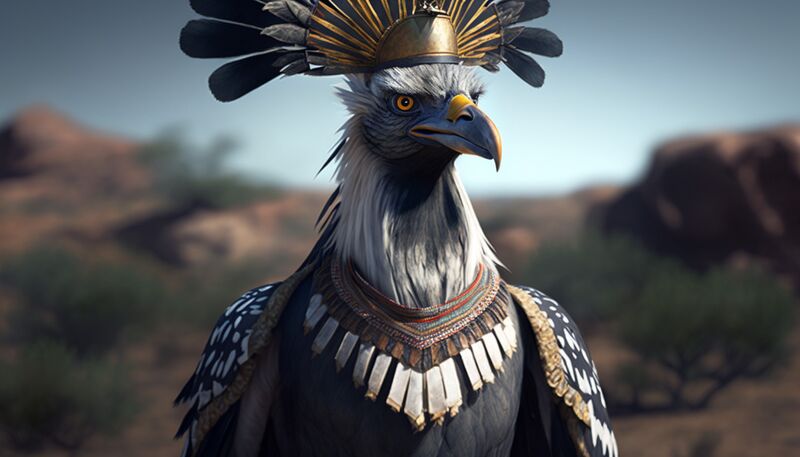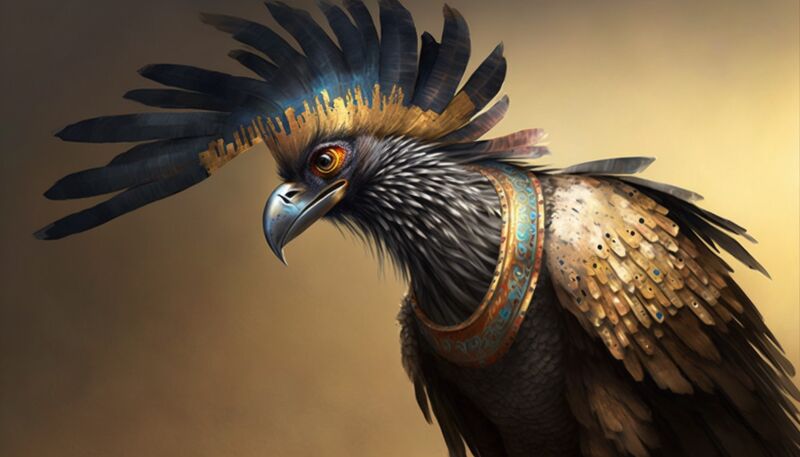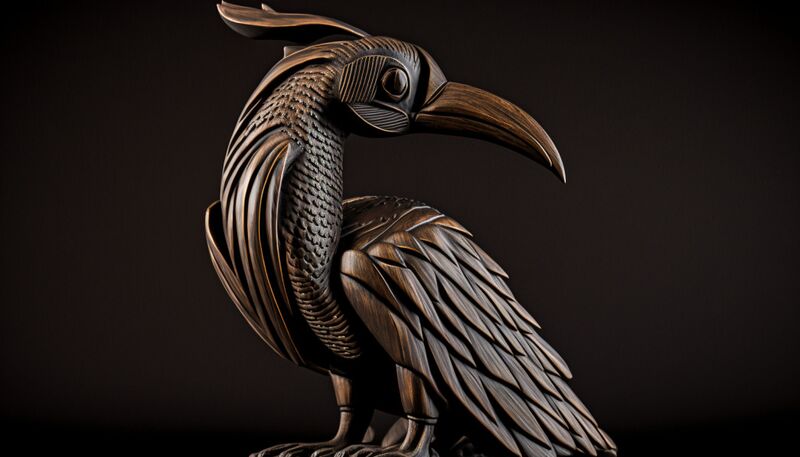
The Beauty and Significance of Birds in South African Culture
South Africa is known for its diverse and stunning wildlife, and its birdlife is no exception. With over 900 bird species in the country, South Africa has become a popular destination for birders from around the world. But birds in South African culture go beyond just their beauty and appeal to birders. They hold deep significance in the country's various cultures, from mythology and folklore to art and conservation.

Mythological African Bird
Birds in Mythology and Folklore
Birds have played important roles in South African mythology and folklore for centuries. In Zulu mythology, the giant bird Ntombi is said to have saved humanity from a flood by carrying people to safety on its back. In Xhosa folklore, the bird known as the indwe is considered a symbol of courage and leadership. In addition, some cultures believe that certain birds are connected to ancestral spirits, and therefore, they are treated with great respect and care.
Many species are associated with powerful symbolism and spiritual significance:The Southern Red Bishop, with its bright red plumage and striking black head, features prominently in traditional Zulu folklore. In Zulu mythology, the bird is associated with love and fertility and is said to symbolize the coming of spring and the renewal of life. According to one legend, the Southern Red Bishop was once a beautiful maiden who was transformed into a bird by a jealous rival.
Another bird with significant cultural importance is the African Fish Eagle, a majestic bird of prey with a distinctive cry. In Xhosa mythology, the African Fish Eagle is associated with the sun and is believed to have the power to bring rain and protect against evil spirits. In one story, the bird is said to have carried a baby to safety during a flood, earning the gratitude and respect of the Xhosa people.
The Blue Crane, South Africa's national bird, is also featured prominently in mythology and folklore. In some cultures, the bird is associated with peace, love, and happiness, and is believed to bring good fortune and protection. In other stories, the Blue Crane is said to be a messenger of the gods or a guide for the souls of the dead.

Mythological African Bird
Birds in Art and Craft
Birds have long been a popular subject in traditional South African arts and crafts, from beadwork to pottery to woodcarving. In many cultures, birds are seen as symbols of beauty, power, and spirituality, and are used to express these ideas in art.
One example of a bird commonly used in traditional South African art is the Lilac-breasted Roller, a striking bird with bright colors and a distinctive rolling flight pattern. The bird is often depicted in beadwork, with artisans using intricate patterns and bold colors to capture its beauty and energy. Similarly, the Knysna Turaco, a brightly colored bird found only in South Africa, is often depicted in pottery, with its vibrant feathers inspiring striking and unique designs.
Birds are also a popular subject in woodcarving, with artisans carving intricate and lifelike sculptures of birds such as the Secretarybird and the African Fish Eagle. These sculptures often capture the bird's essence and beauty, and are highly prized by collectors and art enthusiasts.
In addition to their beauty, birds are also used in traditional South African arts and crafts to express cultural and spiritual ideas. For example, the African Fish Eagle is a popular subject in Xhosa art, and is often used to symbolize the sun and the power of nature. The Blue Crane, South Africa's national bird, is also a popular subject in art, with its graceful and peaceful demeanor used to express ideas of love, harmony, and unity.
Overall, birds are an integral part of traditional South African arts and crafts, and continue to inspire and captivate artists and artisans with their beauty, symbolism, and spiritual significance.

African Bird Sculpture
Birding as a Cultural Activity
Birding is a popular and beloved activity in South Africa, enjoyed by people from all walks of life. The country's rich biodiversity and diverse range of habitats make it an ideal destination for birdwatchers, and birding has become an integral part of South African culture, with numerous birding clubs, societies, and events celebrating the country's feathered inhabitants.
Birdwatchers of all ages and backgrounds flock to nature reserves, parks, and wilderness areas to observe and appreciate the country's incredible birdlife. Many birding clubs and societies have been established across the country, offering opportunities for birdwatchers to connect, share knowledge, and participate in organized birding events and outings.
Many communities have developed birding traditions and practices that reflect their cultural heritage. For example, some communities have traditional birding songs and dances that are performed during expeditions. Birding has become a way for communities to connect with nature and their cultural heritage.
Overall, birding is an important and cherished cultural activity in South Africa, reflecting the country's deep respect for nature and its incredible biodiversity. From its importance in art and folklore to its status as a beloved pastime for many South Africans, birding continues to play a vital role in the country's cultural fabric, connecting people to nature and inspiring a love and appreciation for the incredible birds of South Africa.

Birding in South Africa
Conculsion
Birds have played an important role in South African culture and society for centuries. They have been featured in myths, folklore, art, and conservation efforts, and continue to be an important part of the country's diverse cultural heritage. South Africa's birdlife is truly remarkable, and we should all take the time to appreciate and celebrate it.
